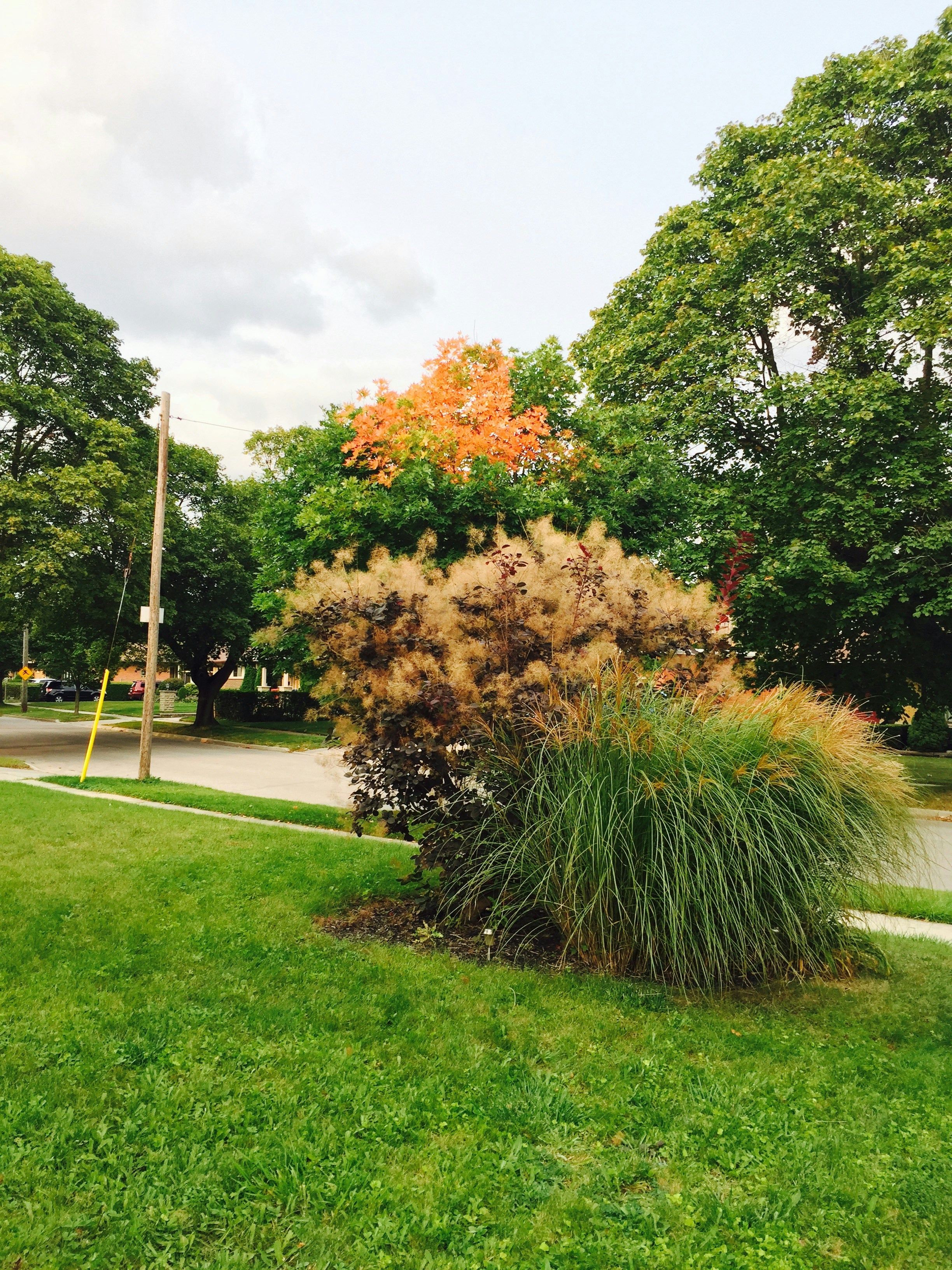Understanding the Importance of Fall Lawn Care
As the vibrant colors of summer fade, fall presents a crucial opportunity for homeowners in Indiana to invest in their lawns. Appropriately preparing lawns during this season significantly impacts the health and appearance of the grass when spring arrives. Fall lawn care is essential for several reasons, beginning with the nature of grass growth. Contrary to common misconceptions, grass continues to grow throughout the fall as temperatures cool, and moisture levels increase. This promotes root growth and allows for the establishment of a robust foundation that supports healthy growth in the warmer months.
One of the primary benefits of fall lawn care is the ability to strengthen the grass’s root system. Grasses such as Kentucky bluegrass or fescue, commonly found across Indiana, thrive in cooler temperatures. By aerating the soil, overseeding, and applying fertilizer in the fall, homeowners can foster an environment where grass roots delve deeper, enhancing nutrient uptake and water retention. Additionally, addressing any lawn diseases and pests during this time can prevent further complications in the spring, maintaining a healthy landscape.
Moreover, proper maintenance during the fall fosters a vibrant lawn come spring, combating the effects of winter stress. Implementing actions such as mowing and raking leaves prevents excessive moisture accumulation, which can lead to mold and other lawn issues. This proactive approach contrasts with the prevalent belief that lawn care is unnecessary once temperatures drop, significantly influencing the garden’s aesthetics and overall health. Thus, as the seasons shift, understanding the importance of fall lawn care will ensure a lush, vibrant lawn in the spring, showcasing the investment made during the fall months.
Key Fall Lawn Tasks to Complete
The fall season is pivotal for maintaining a healthy lawn that can flourish come spring. A series of essential lawn care tasks should be performed during this time, each contributing significantly to the overall health of the grasses and soil.
To begin with, mowing is crucial. As the growing season winds down, it is recommended to lower the mowing height to about 2 to 2.5 inches. This practice allows more sunlight to reach the grass crowns and facilitates better air circulation while reducing the risk of snow mold during winter.
Aerating is another important task as it alleviates soil compaction and improves water and nutrient penetration. The best time to aerate is typically in early to mid-fall, when the soil is moist but not overly wet. Use a core aerator to punch holes into the lawn, allowing roots to expand and thrive.
Seeding is often performed following aeration. Fall is an optimal time to overseed with cool-season grasses, as they establish well before winter. Choose a seed mix that is suited to Indiana’s climate, and ensure to keep the newly seeded areas adequately watered until germination occurs.
Fertilizing your lawn in fall is essential for providing nutrients that promote strong root development. Soil testing before fertilization aids in determining the precise nutrient requirements and pH levels. Select a slow-release fertilizer ideally high in potassium, as it assists lawns in preparing for cold temperatures.
Lastly, raking leaves is integral to prevent the formation of thatch and molds. Regularly removing leaves ensures grass receives sunlight while reducing the likelihood of pests and diseases. Performing these key fall lawn tasks will lay a robust foundation for a vibrant lawn in the upcoming spring months.
Common Mistakes to Avoid in Fall Lawn Care
As the fall season approaches, homeowners in Indiana often embark on tasks to prepare their lawns for the winter months. However, there are several common mistakes that can jeopardize the health of a lawn, potentially leading to issues come spring. One prevalent error is neglecting leaf removal. Fallen leaves can create a dense mat over grass, blocking sunlight and trapping moisture, which can lead to diseases such as turf mold. It is essential to regularly rake and clear leaves from the lawn to ensure adequate light exposure and air circulation, promoting a healthy grass ecosystem.
Another mistake commonly observed is overly aggressive mowing. As temperatures drop, grass growth slows down; thus, homeowners may feel the urge to mow their lawns down too short in preparation for winter. This practice exposes the soil and roots to harsher winter conditions, making the grass susceptible to frost damage and disease. Instead, it is advisable to maintain a mowing height of around three inches, which provides sufficient insulation against cold weather.
Additionally, many homeowners neglect to adjust their fertilization practices to match the specific climate and soil conditions of Indiana. Applying too much fertilizer late in the season can stimulate growth that the grass will not have the resources to sustain through the winter months, which can hinder its health in the spring. It is vital to select a slow-release fertilizer, appropriate for the Indiana climate, and apply it according to the local agricultural guidelines.
In conclusion, avoiding these common fall lawn care mistakes can significantly impact the overall health and appearance of a lawn. By ensuring proper leaf removal, maintaining appropriate mowing heights, and adjusting fertilization strategies based on local conditions, Indiana homeowners can foster a resilient lawn that thrives in the upcoming spring season.
Resources and Tools for Effective Fall Lawn Care
Maintaining a healthy lawn requires not only knowledge but also the right tools and resources. In Indiana, fall is a crucial time for lawn care, and having the appropriate equipment can simplify this process. One essential tool for fall maintenance is a soil aerator, which helps alleviate compacted soil and promote the penetration of air, water, and nutrients. Aeration is particularly important before overseeding, as it ensures effective seed-to-soil contact.
Another vital tool is a mulching mower. Unlike traditional mowers that collect grass clippings, mulching mowers finely chop the grass and return nutrients back to the soil. This practice not only reduces waste but also enriches the lawn during the fall months, providing essential nourishment for the upcoming winter season. Additionally, spreaders are indispensable for distributing fertilizers and grass seeds evenly across the lawn. Both broadcast and hand-held spreaders aid in achieving an even application rate, which is critical for healthy lawn growth.
In terms of local resources, Indiana homeowners can benefit from visiting nearby gardening centers and nurseries that often provide a wealth of knowledge about local lawn care practices. Many of these establishments offer high-quality products tailored to the regional climate and soil types. Furthermore, professional lawn care services are an option for those who prefer expert assistance. Numerous companies specialize in fall lawn treatments, including aeration, fertilization, and overseeding, ensuring that homeowners’ lawns are primed for the spring season.
For advice and support, various online platforms and local gardening forums can provide valuable insights from experienced gardeners and lawn care professionals. Engaging with these resources can enhance lawn care practices and help address specific challenges faced in Indiana. Utilizing high-quality products and seeking professional guidance when necessary is paramount in achieving a lush, thriving lawn.
If you’re interested in purchasing the item you seek, please click the link for additional details: #americanachoice.
https://amzn.to/3SBN3Oy
AFFILIATE DISCLOSURE: I am an affiliate for this company, I am not a paid employee.
I may receive a commission if you click a link on this page and choose to purchase something.
You can rest assured I will only share things I believe in and will be valuable to you.


